Bio-fuels have been around a while, just like the concept of hydrogen fuel cell-powered vehicle. Nissan is taking these two concepts and combining them into its Solid-Oxide Fuel Cell powertrain. But this is no theoretical lab experiment. No, Nissan has built a working model with its mid-size NV cargo van.
It’s called the e-Bio Fuel-Cell and it offers the benefits of a hydrogen fuel-cell without the need for compressed hydrogen gas and the complicated infrastructure required to handle it. Rather, the e-Bio Fuel-Cell runs on bio-ethanol harvested from corn or sugarcane and can be dispensed in liquid form the same way traditional gasoline and diesel fuels have been for the last century – at a filling station.
"The e-Bio Fuel-Cell offers eco-friendly transportation and creates opportunities for regional energy production… all the while supporting the existing infrastructure," says Nissan president and CEO, Carlos Ghosn. "In the future, the e-Bio Fuel-Cell will become even more user-friendly. Ethanol-blended water is easier and safer to handle than most other fuels. Without the need to create new infrastructure, it has great potential to drive market growth."
Nissan says this NV e-Bio Fuel-Cell concept van runs on 100 percent ethanol to charge a 24 kWh battery, which affords more than 373 miles of driving range via an electric drivetrain. And of course, it does this with a very small global impact. The little CO2 emissions generated by the e-Bio Fuel-Cell is offset by the growing process of the corn and sugarcane, effectively canceling out the vehicle emissions for an overall zero-emissions impact.
Continue reading for the full run-down and informative video.
2017 Nissan Solid-Oxide Fuel Cell NV200 Van
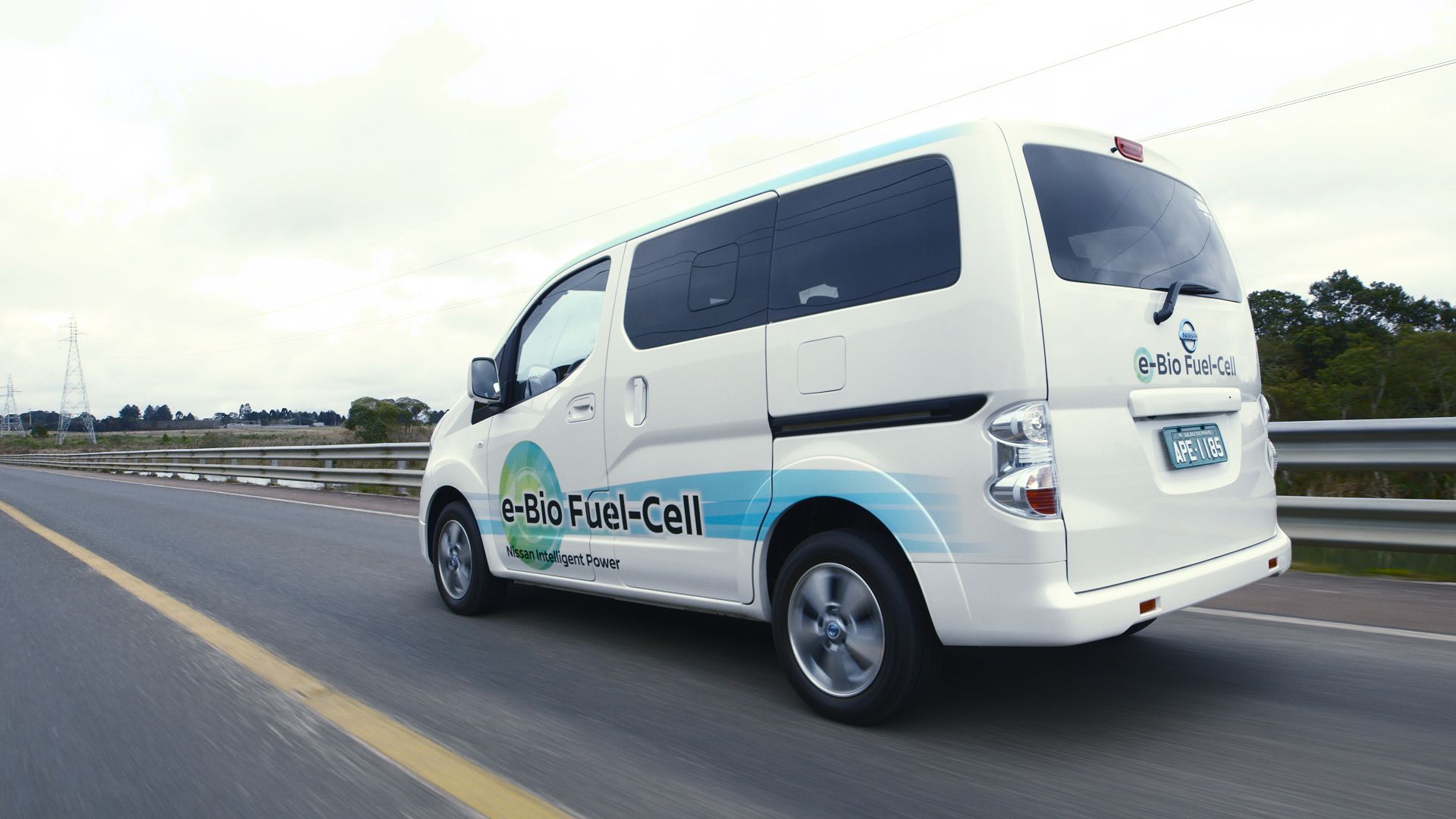

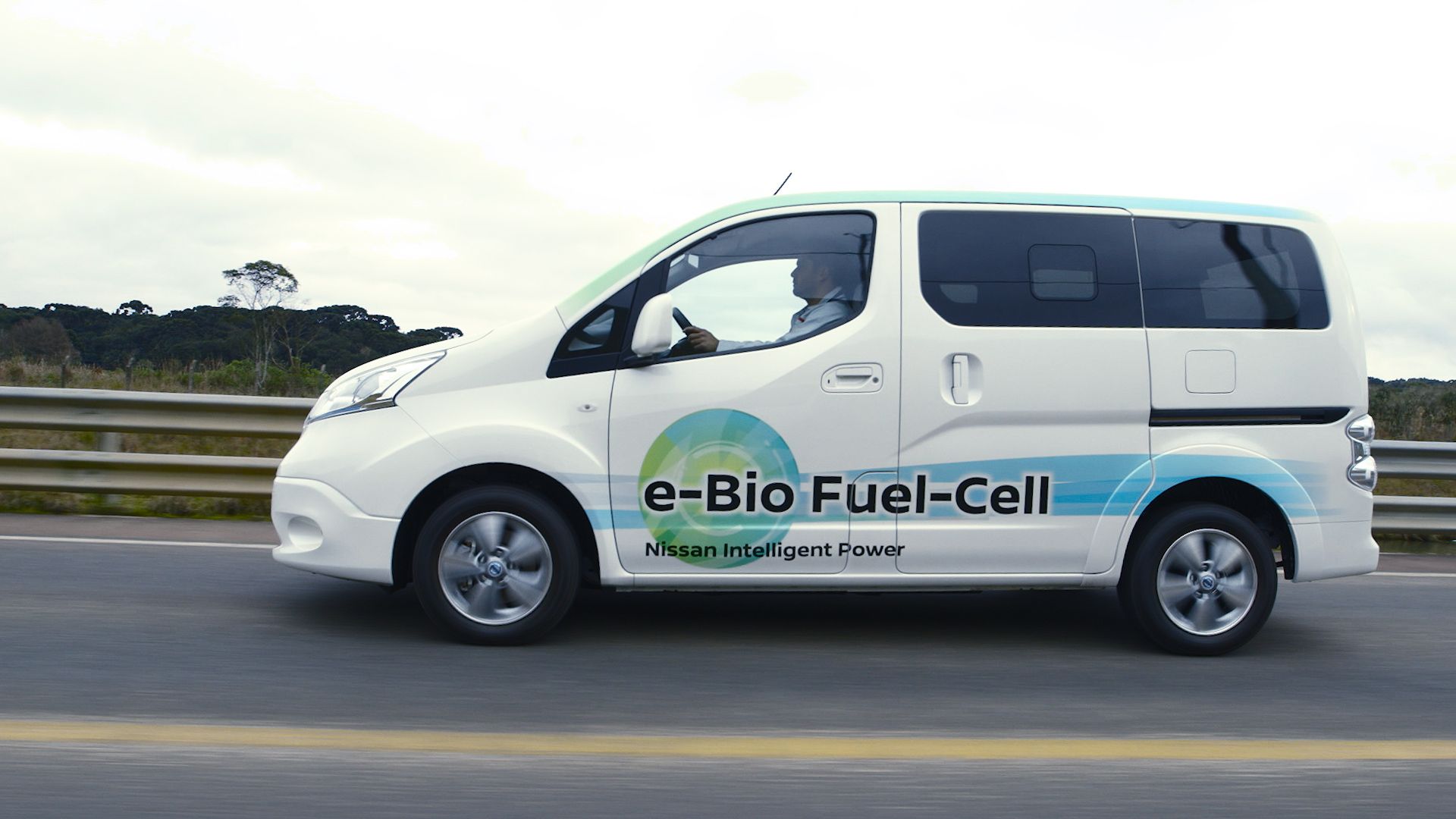
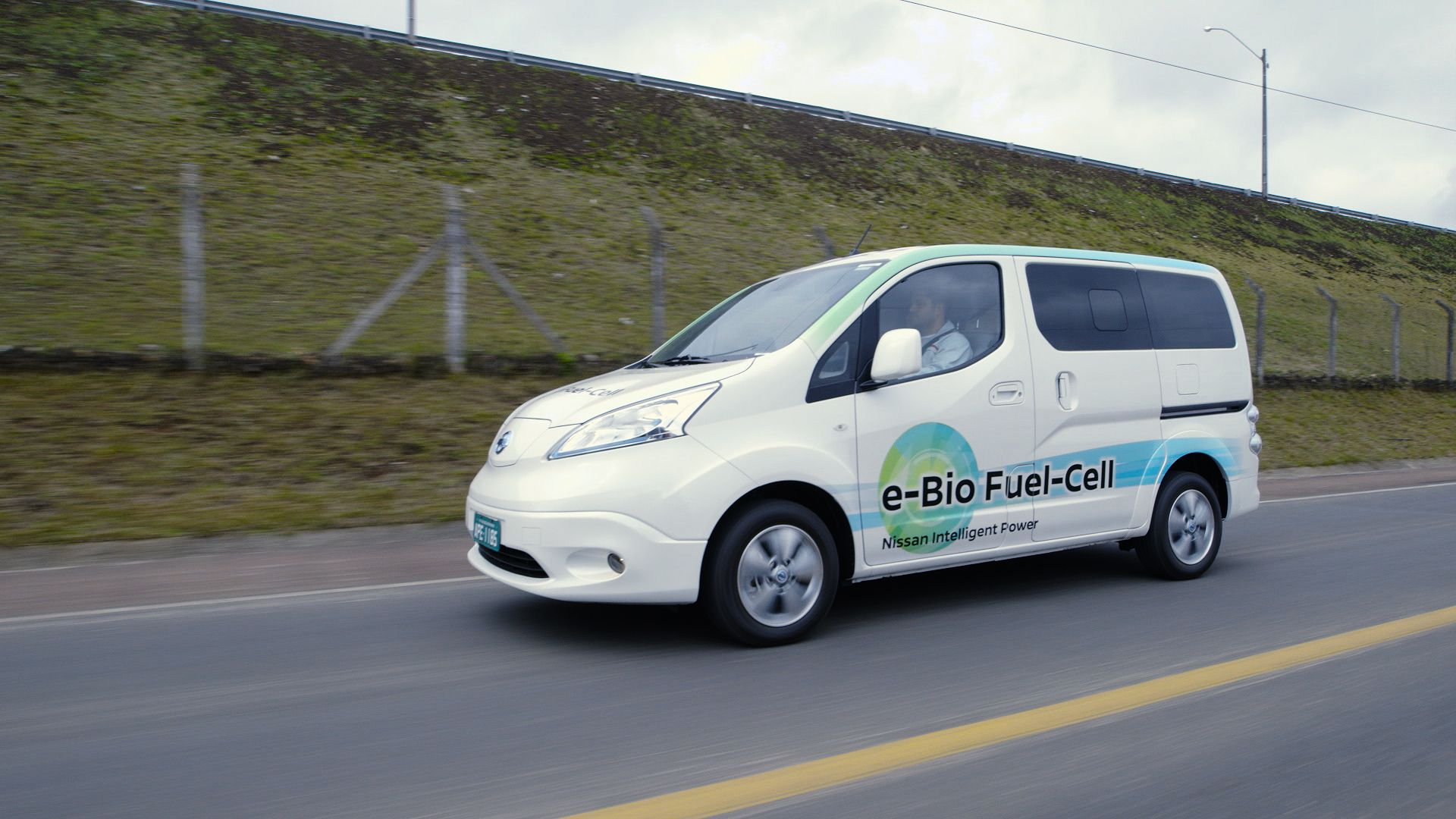
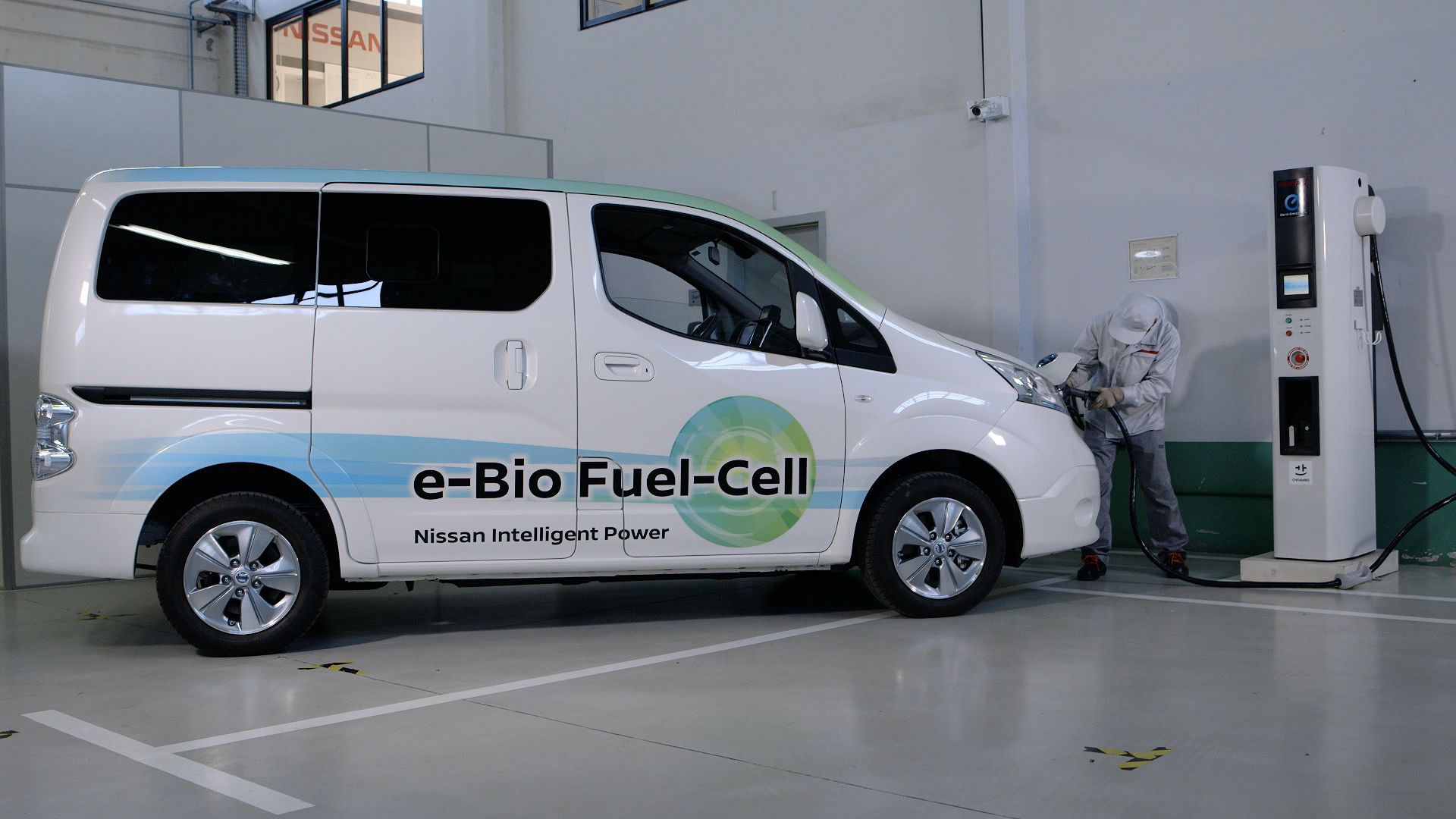
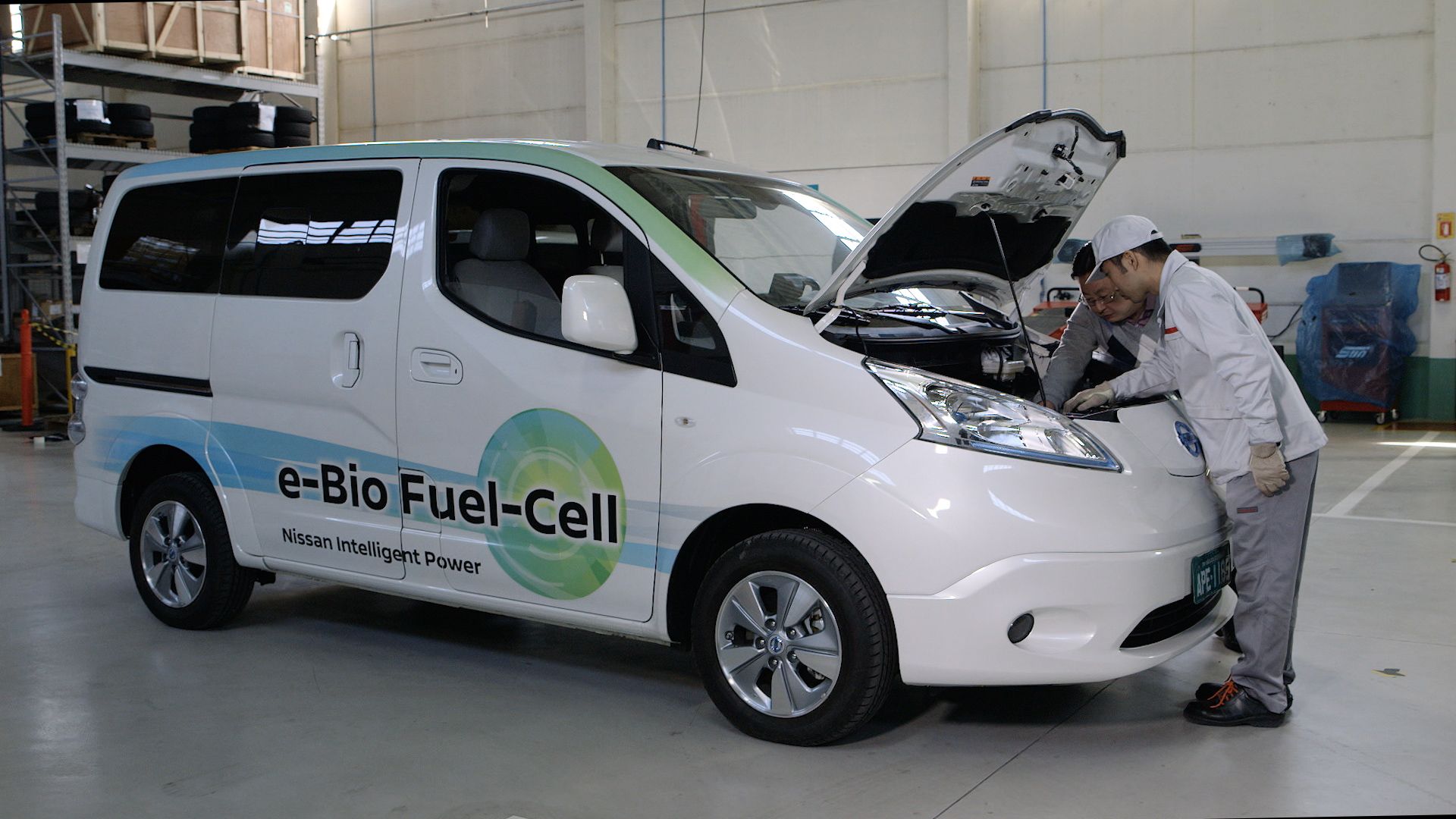
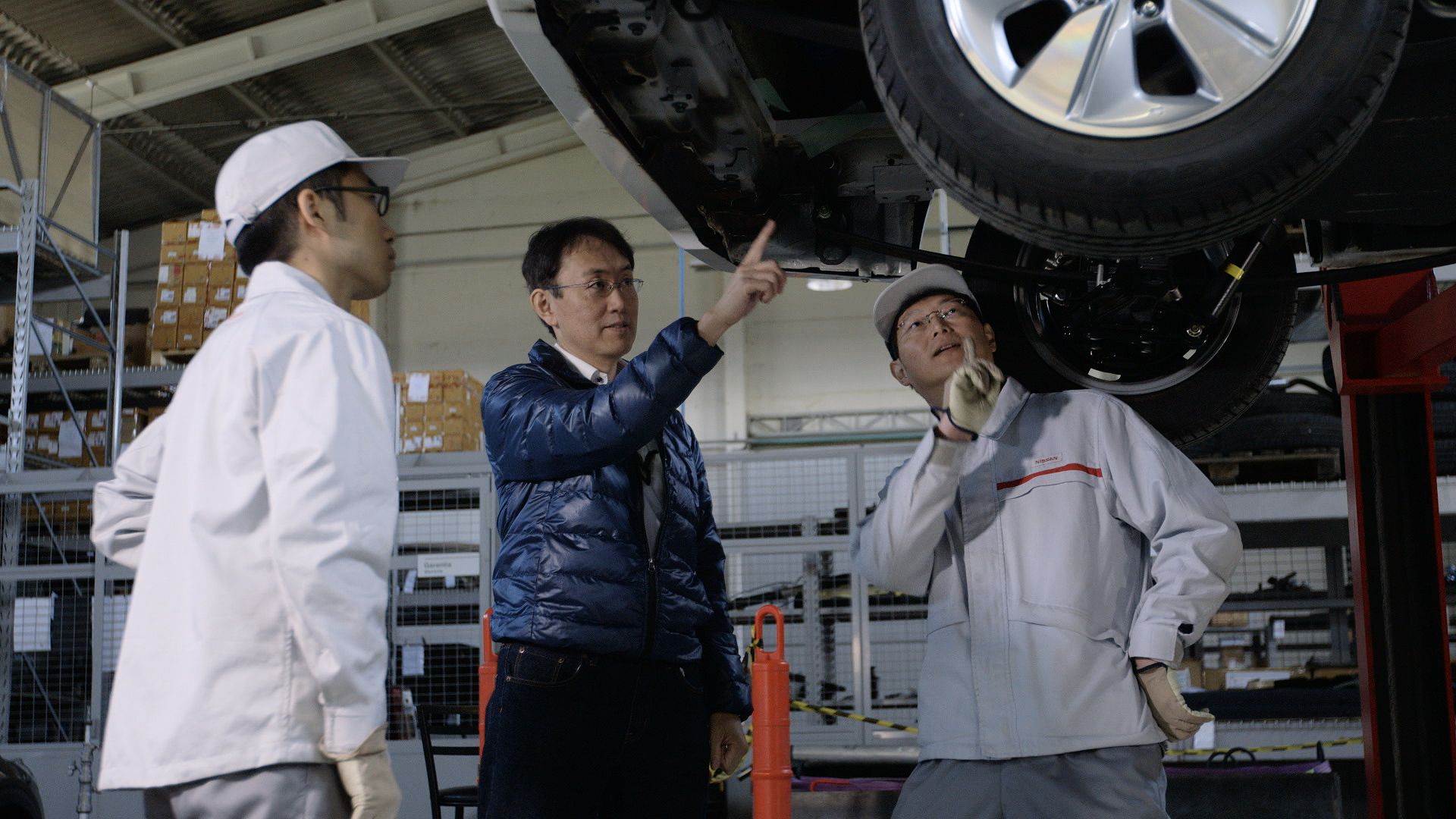
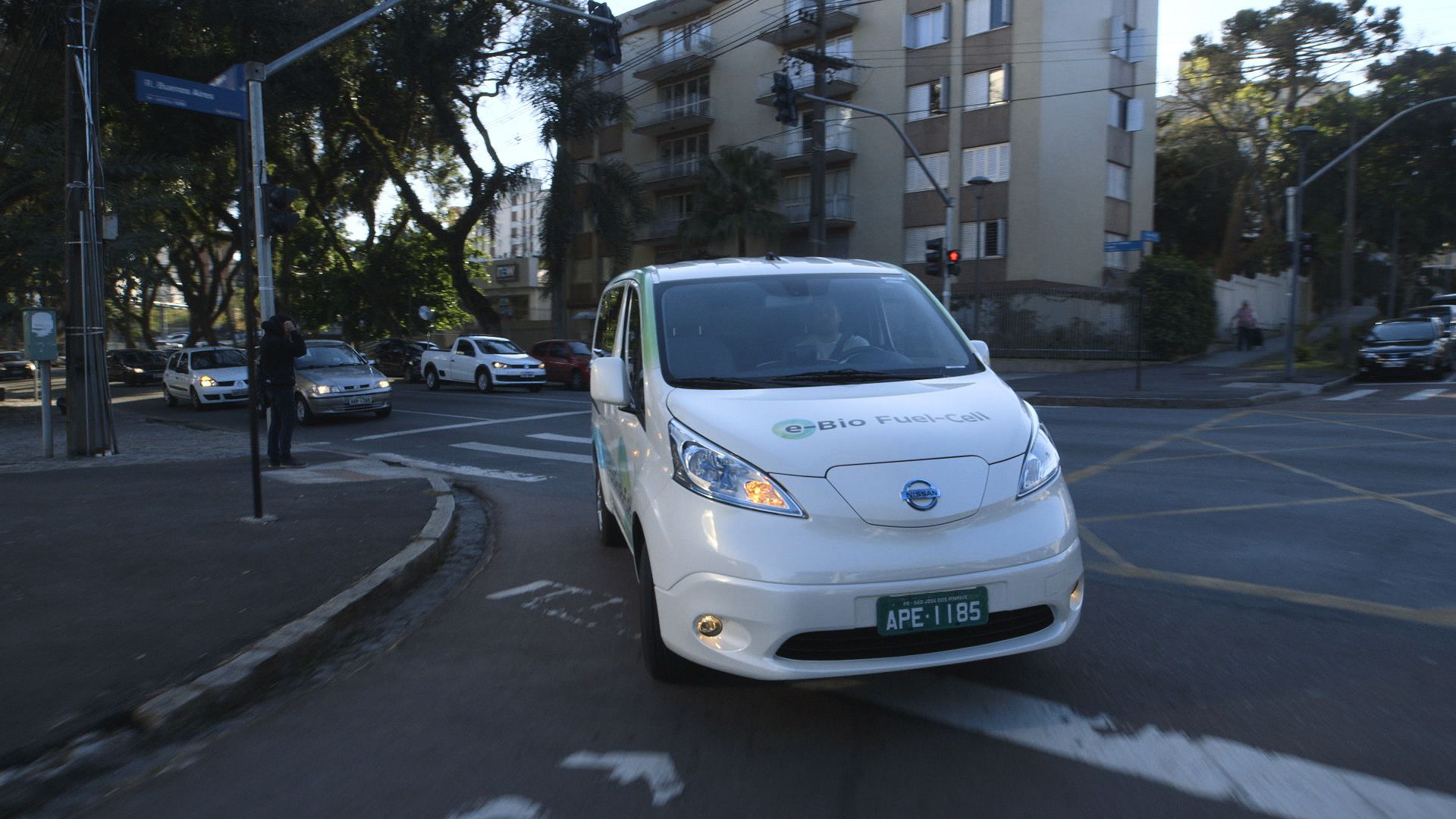
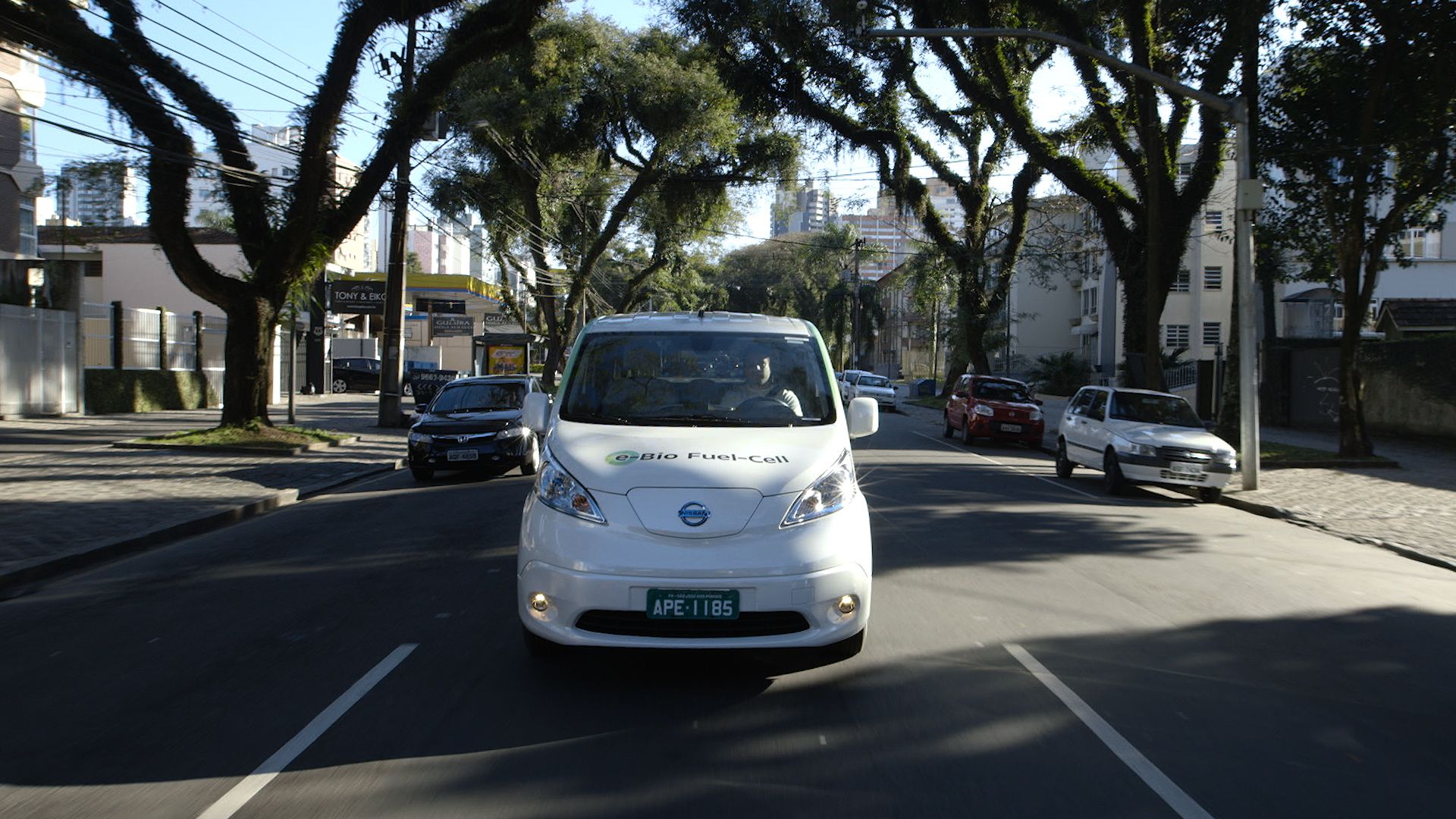
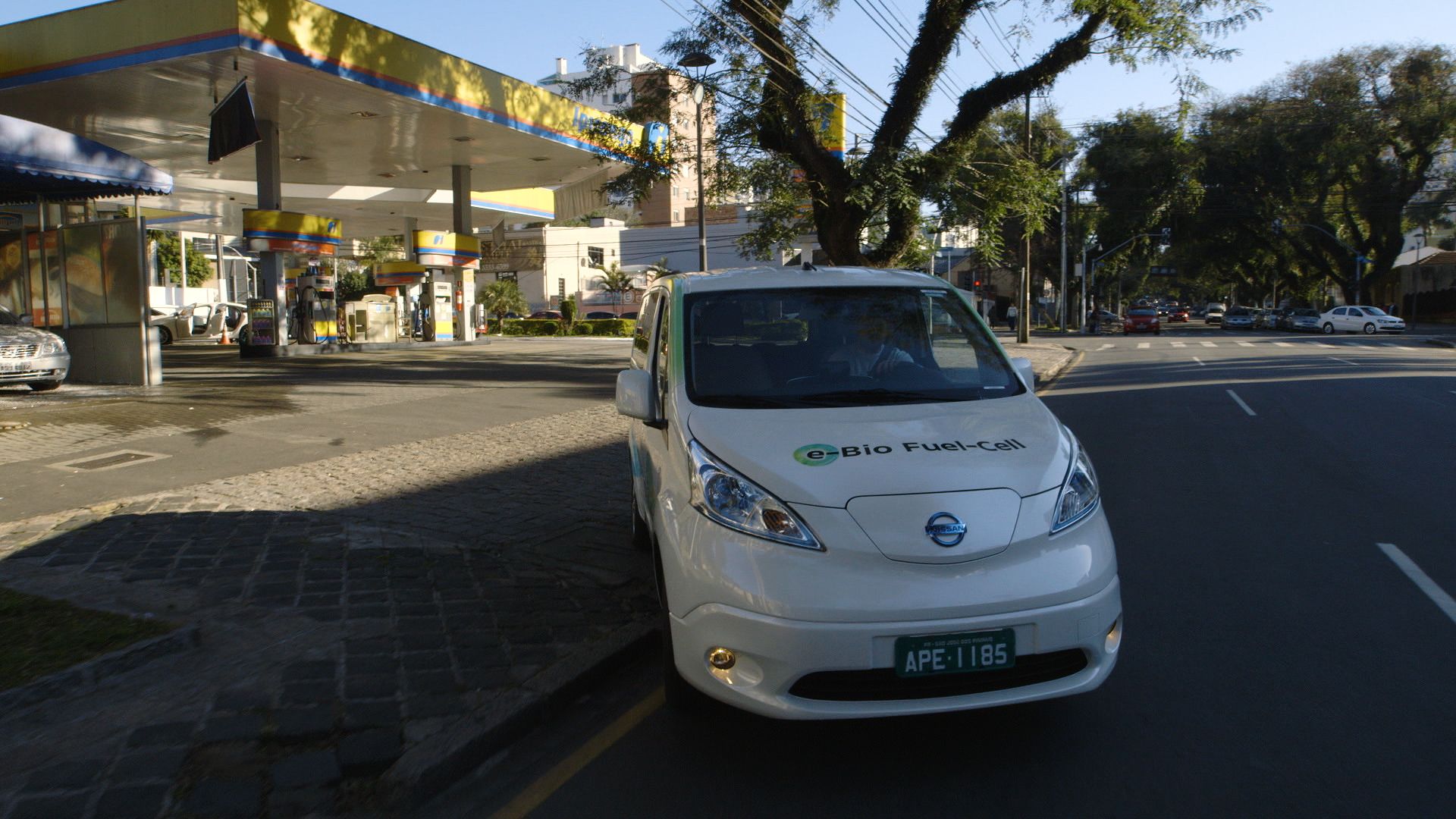
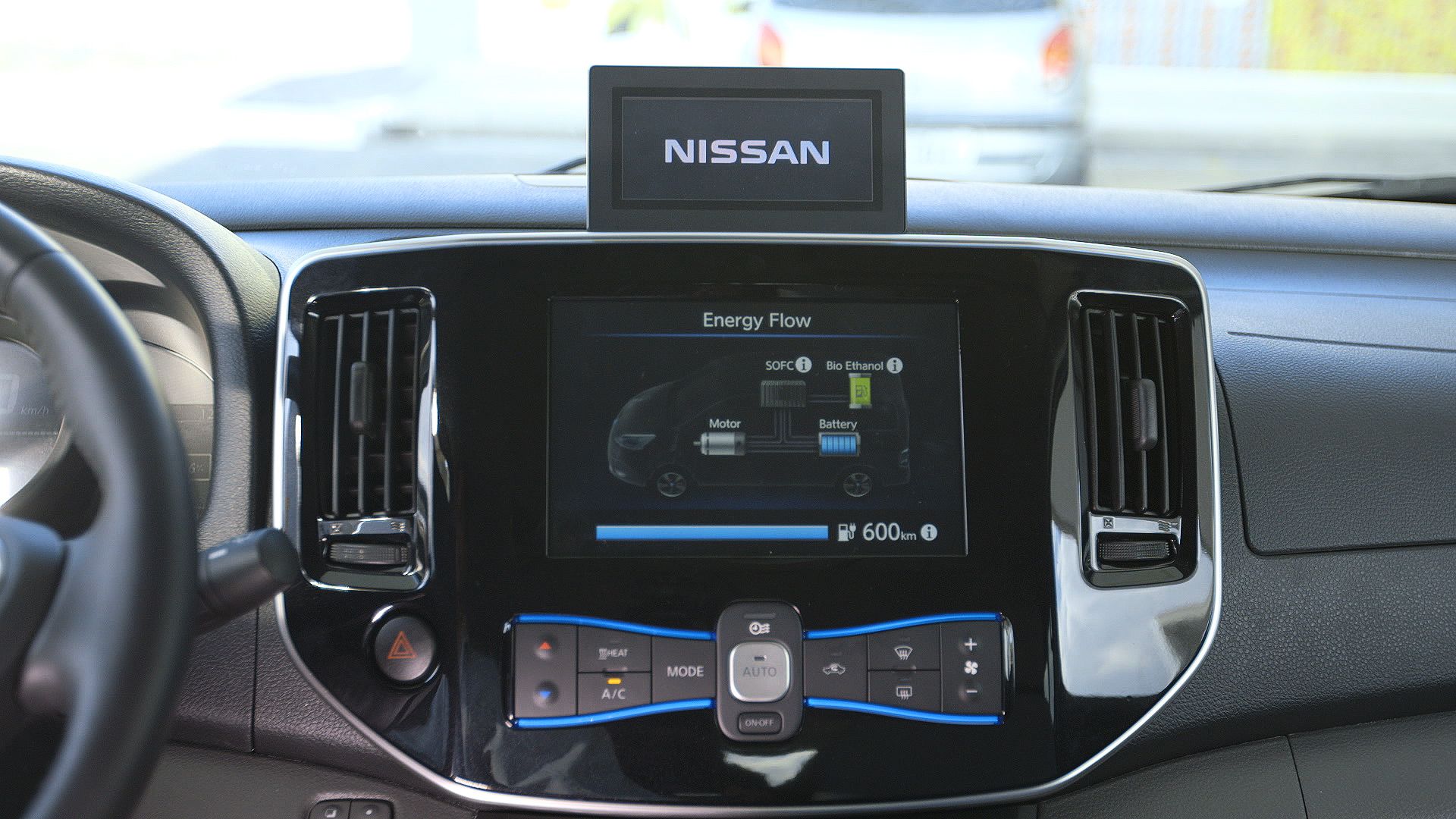
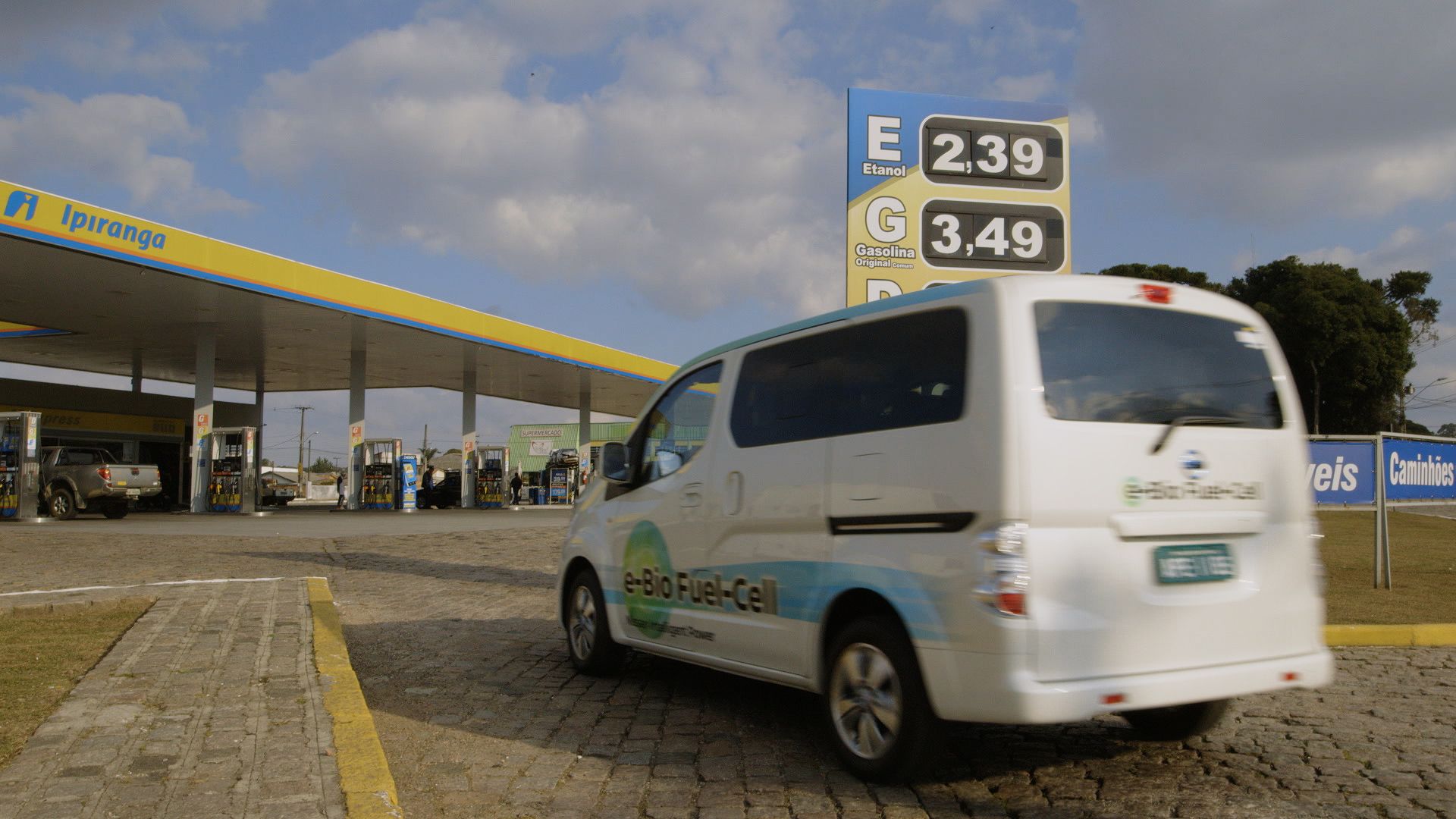
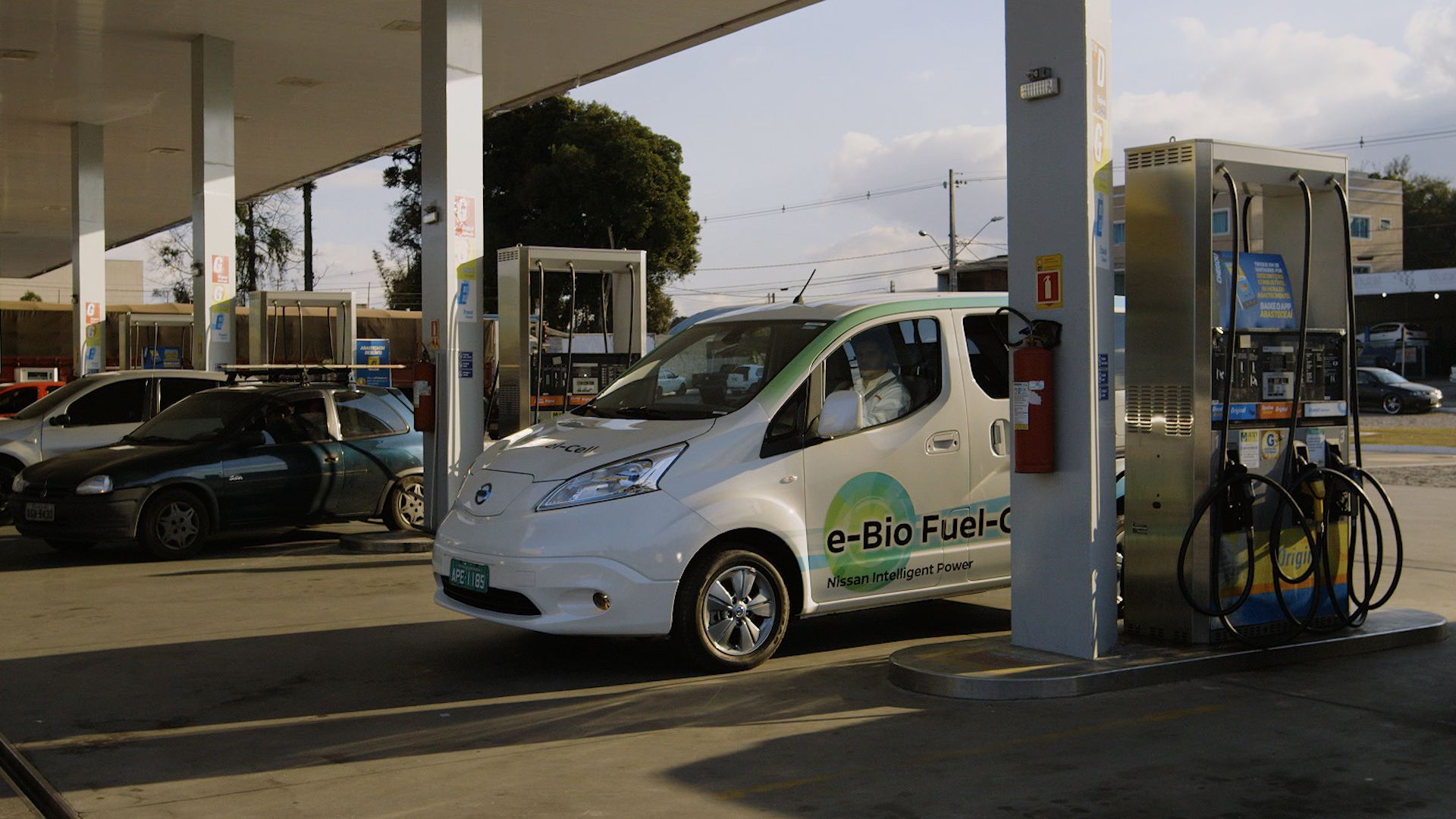
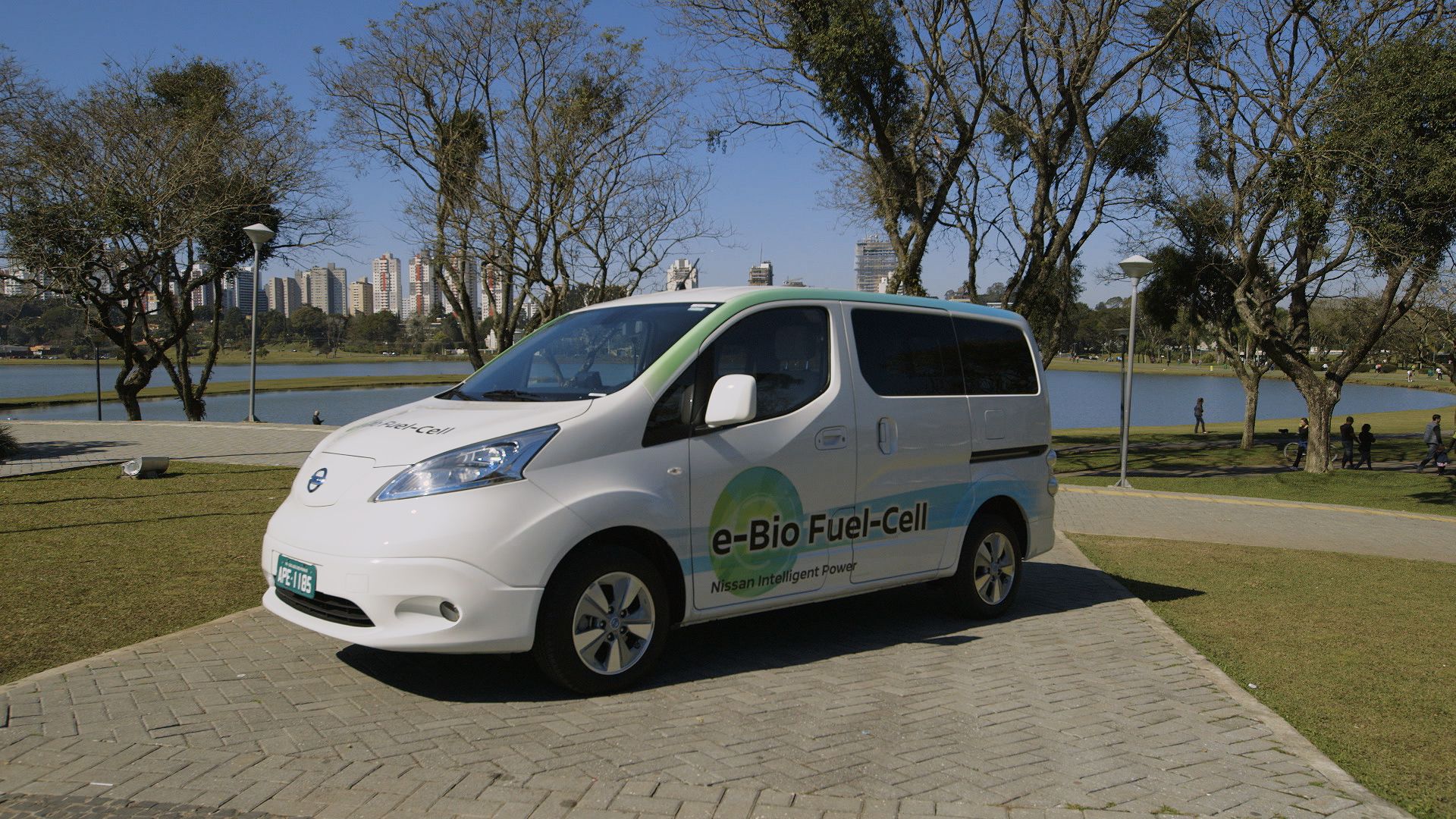
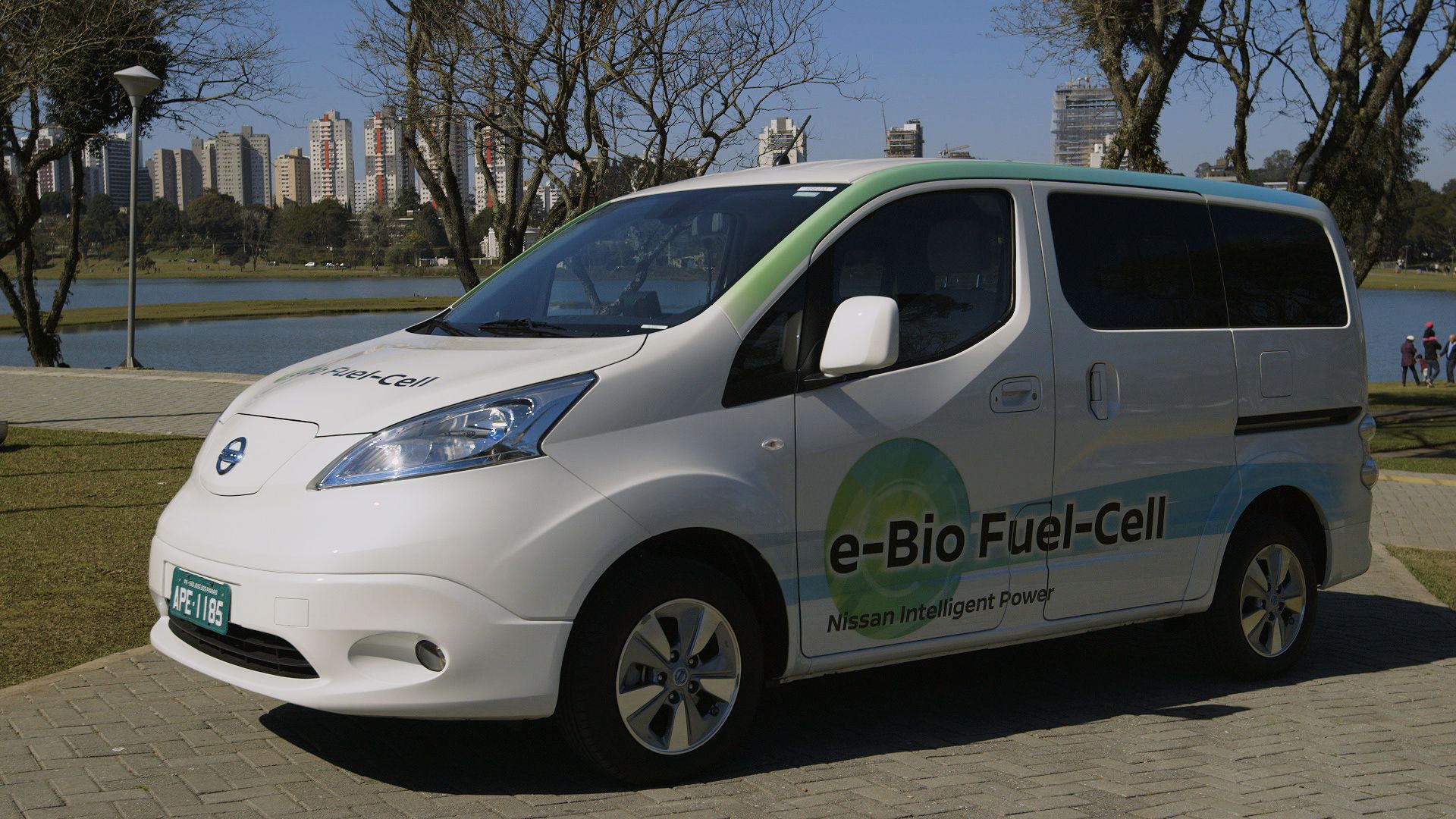
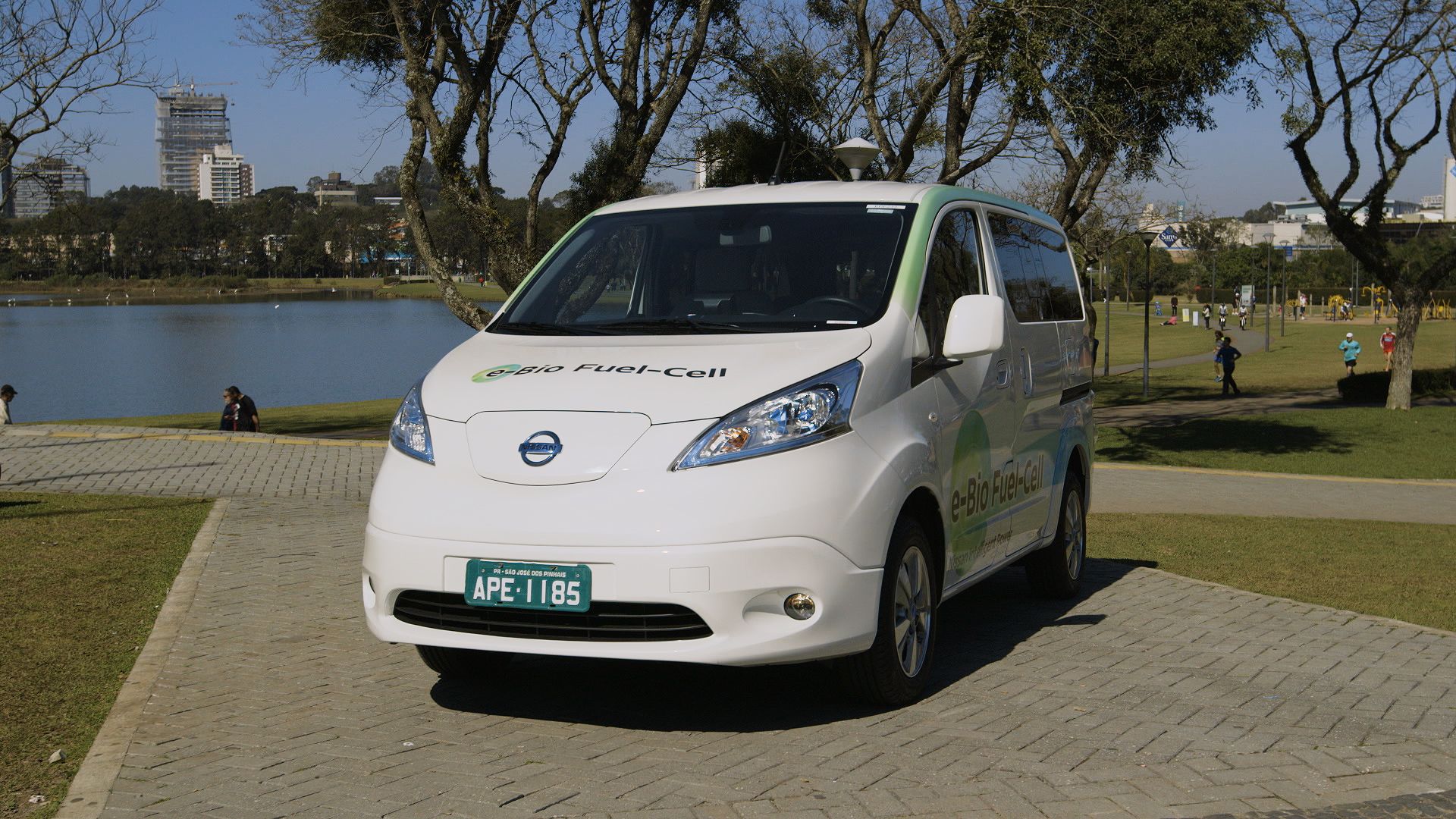
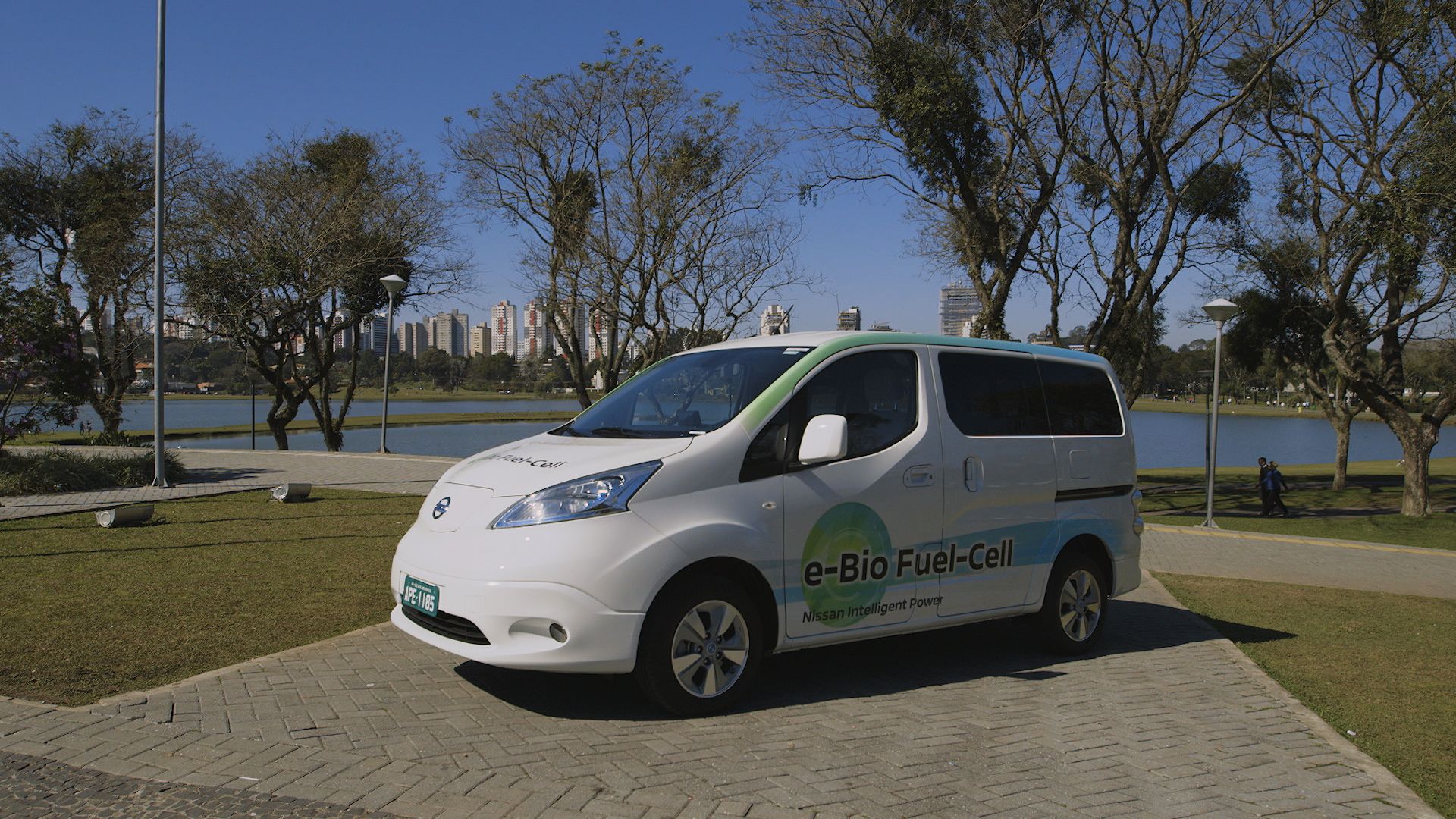
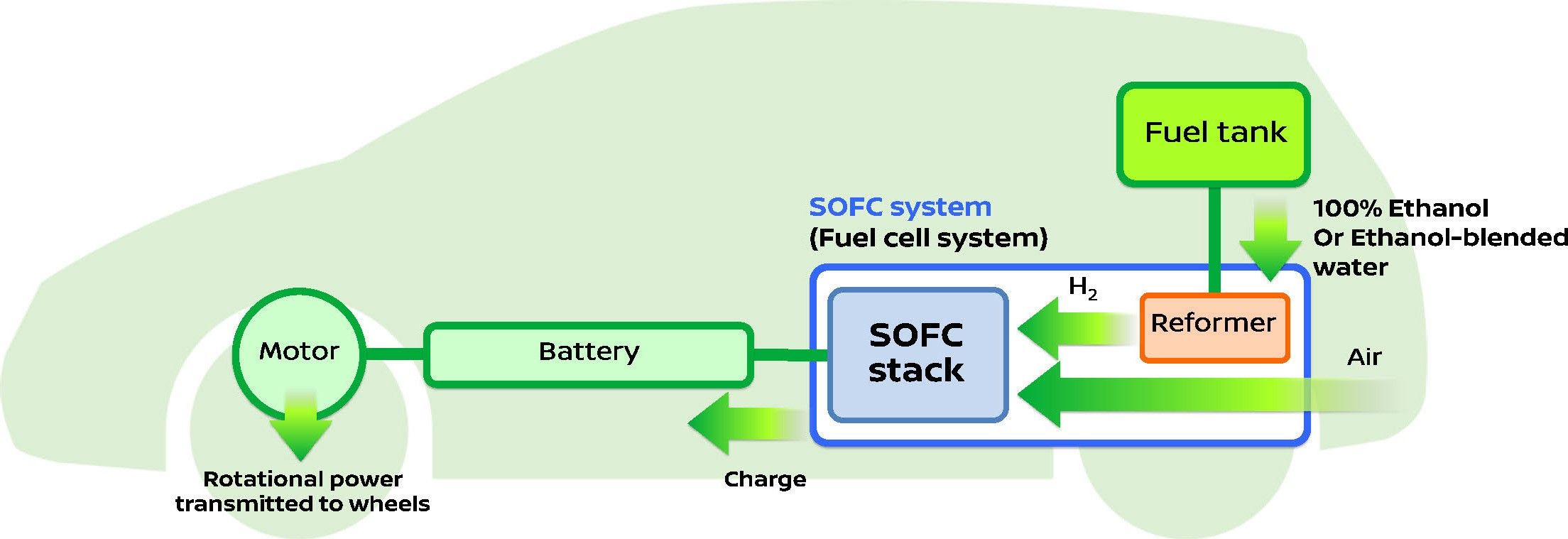
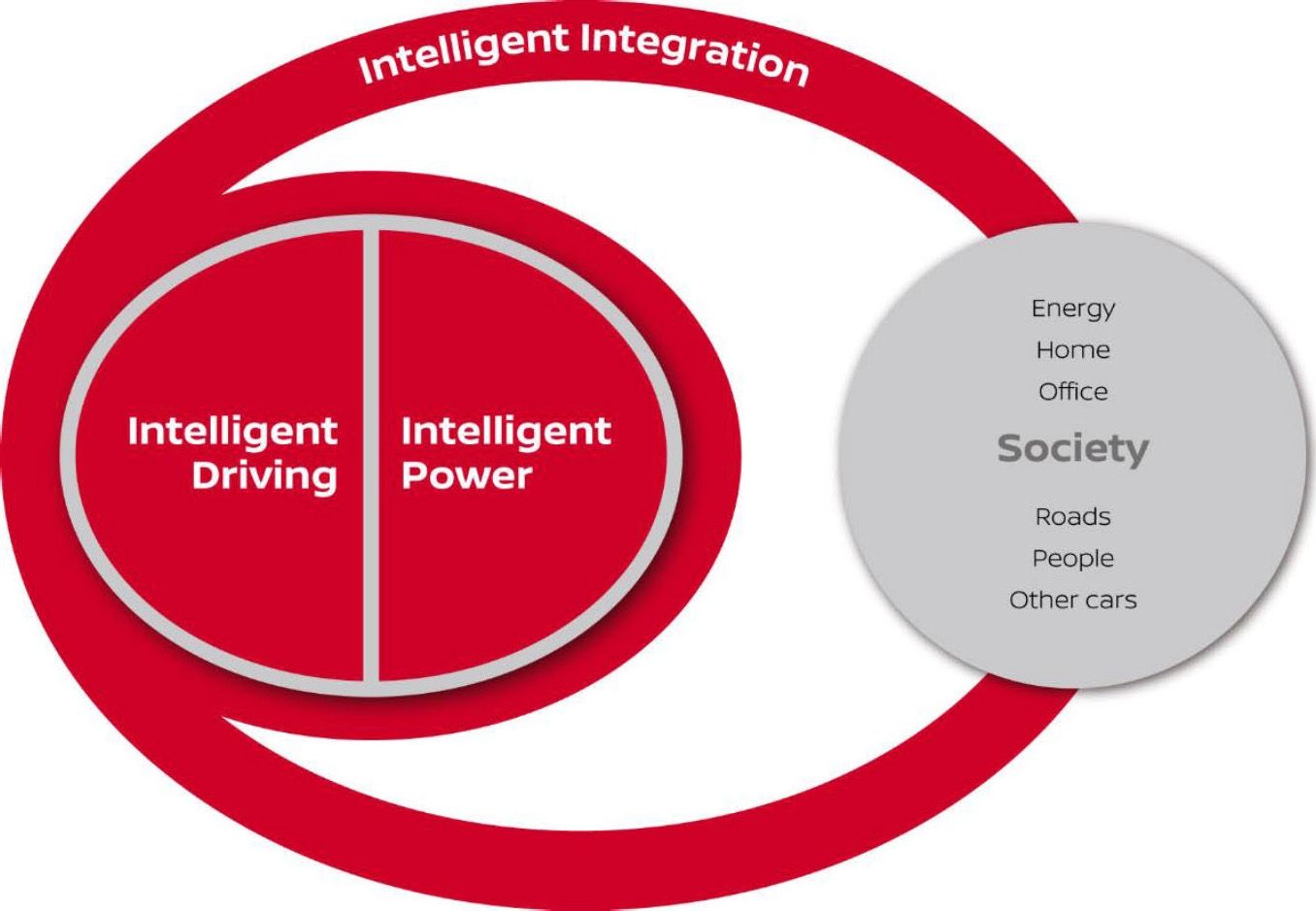
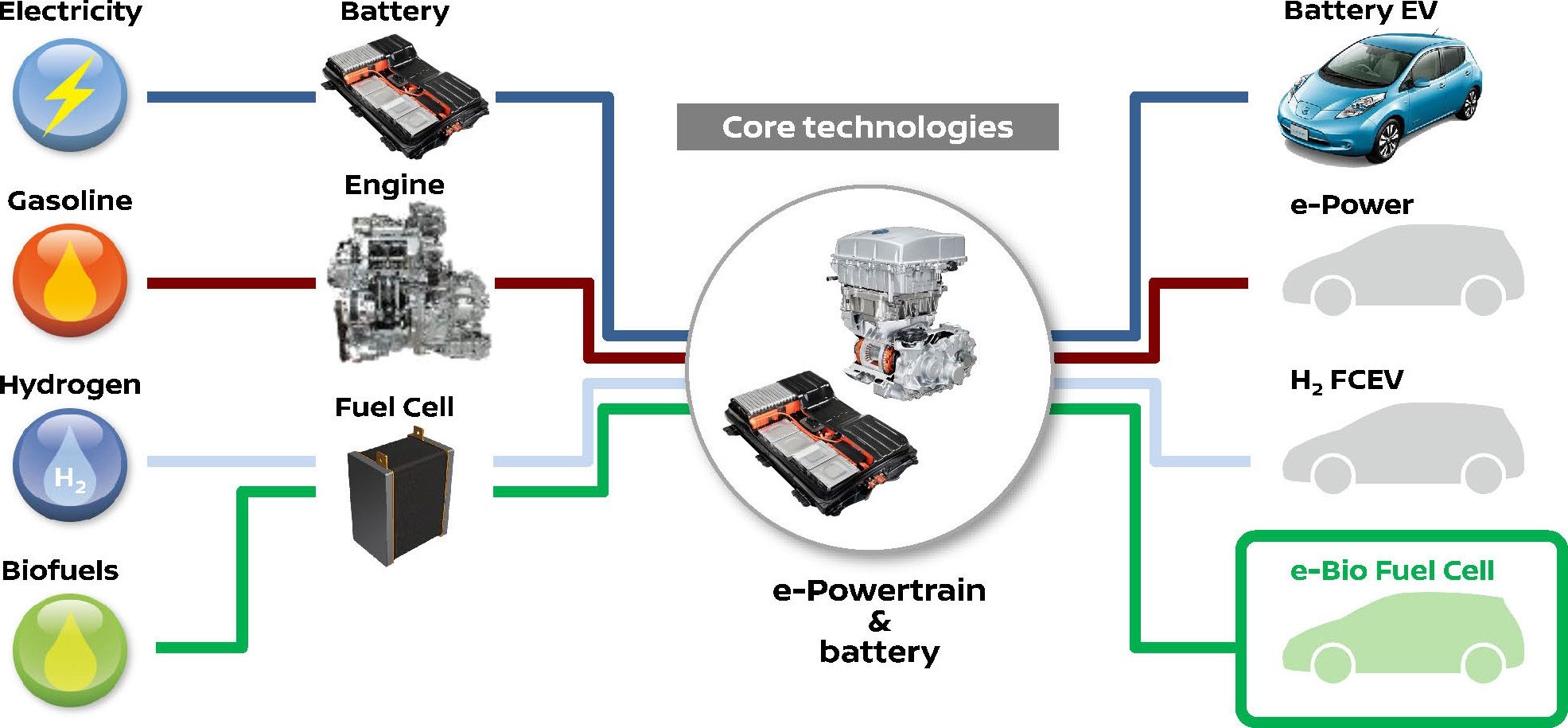
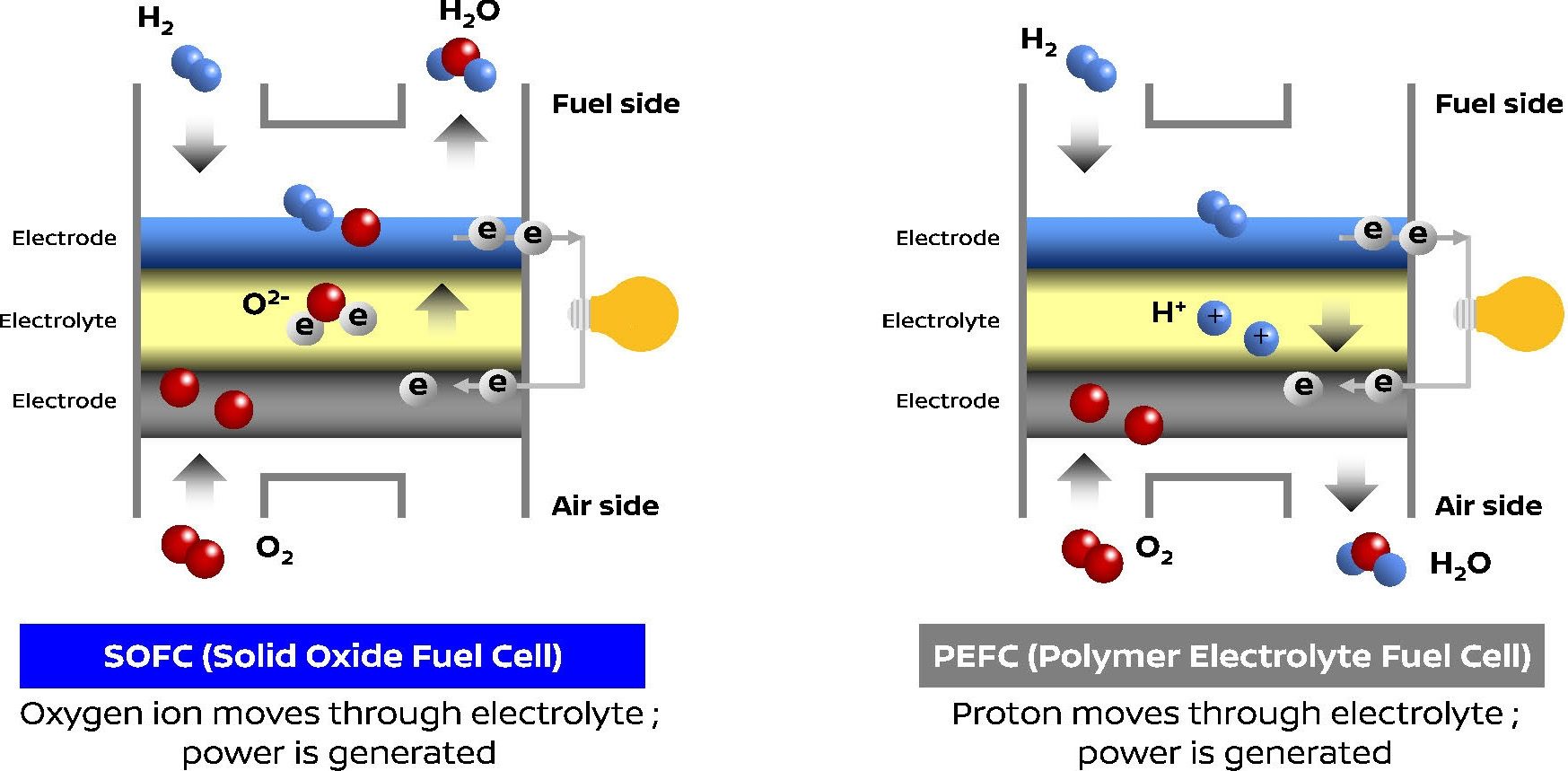
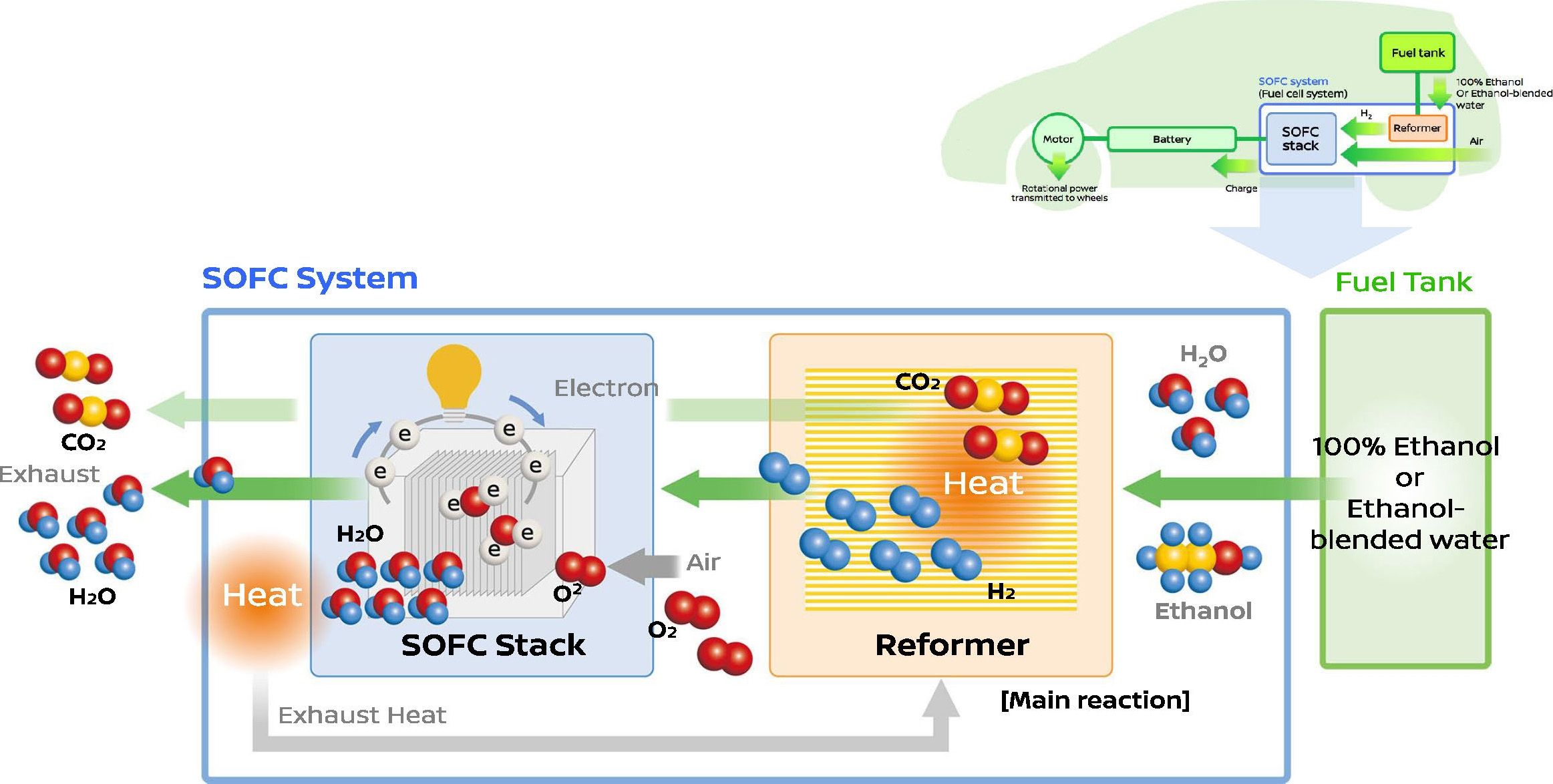
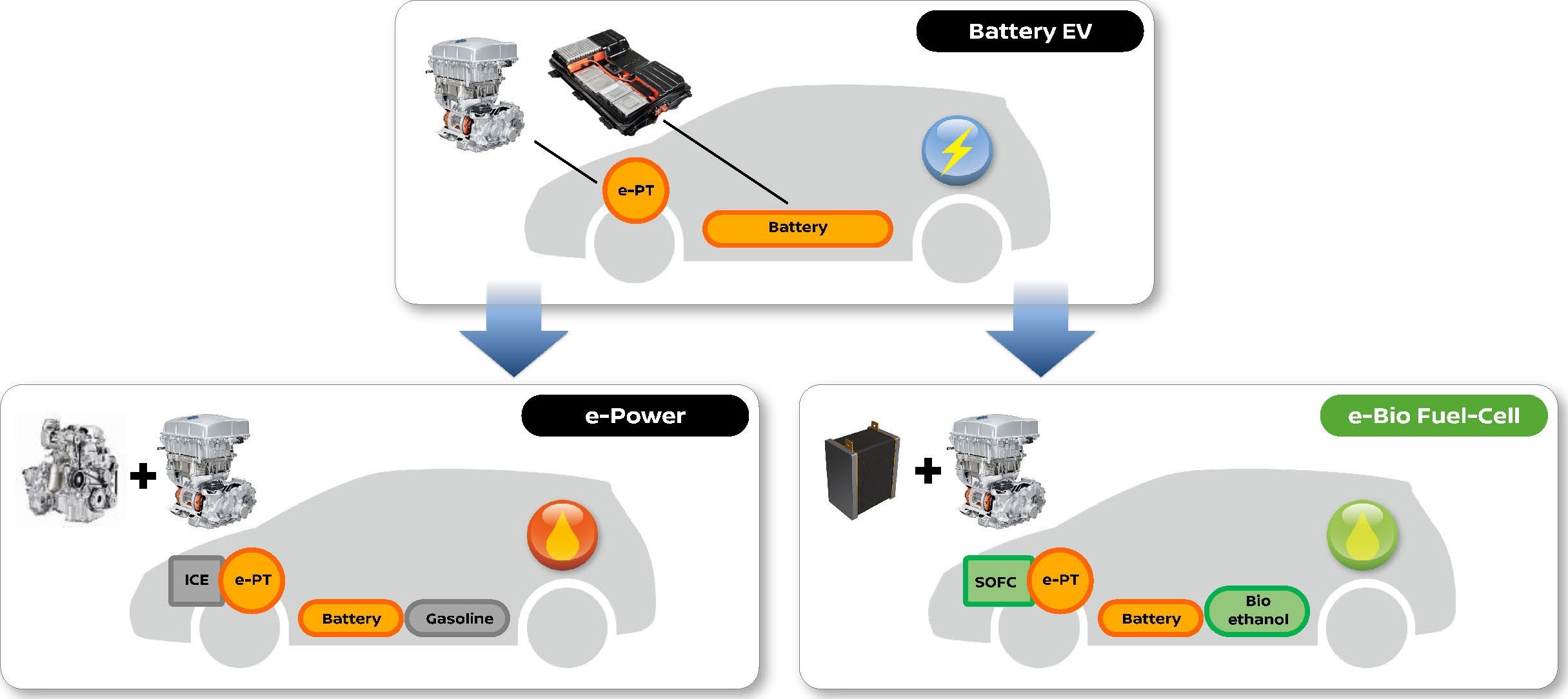
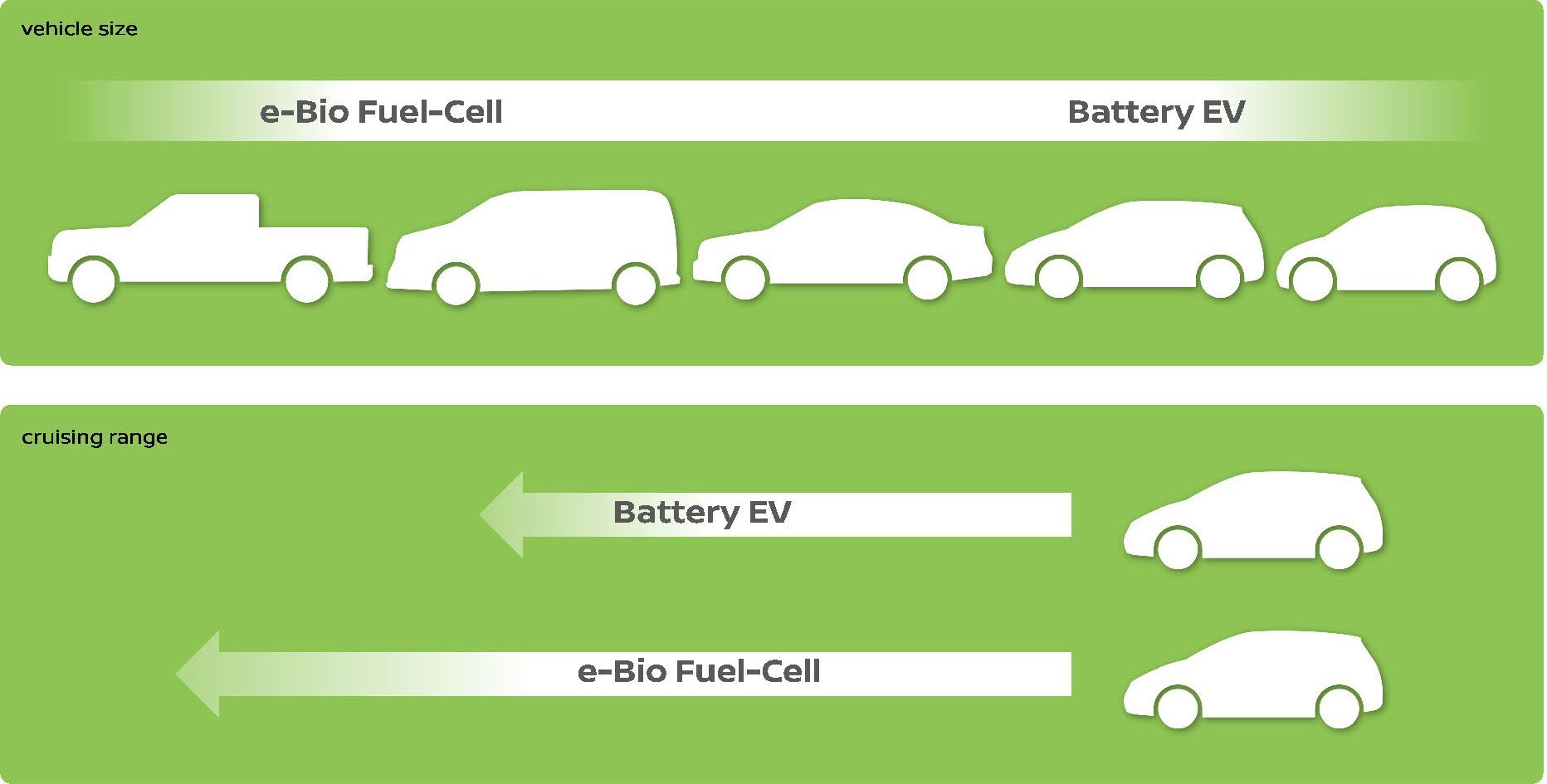
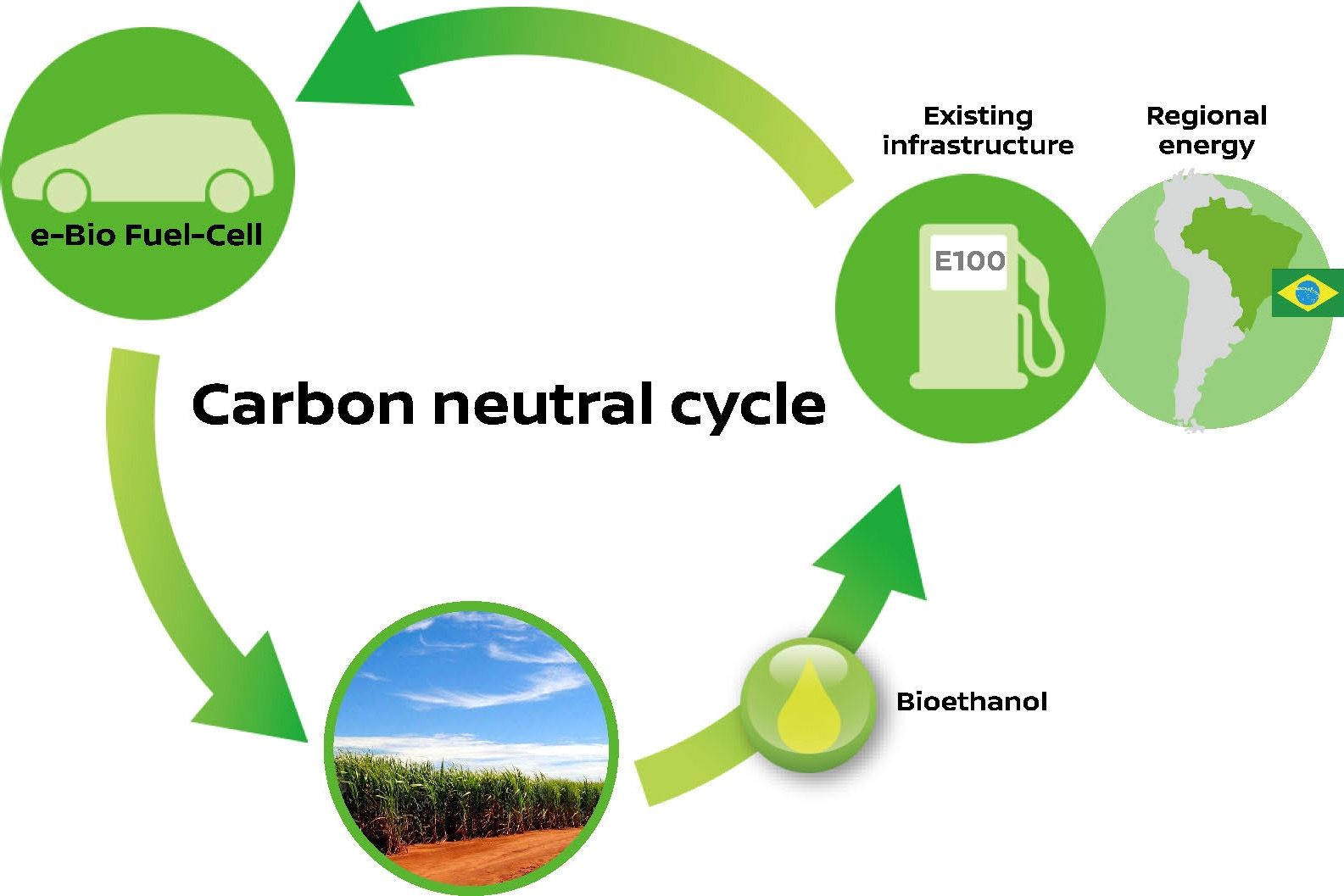
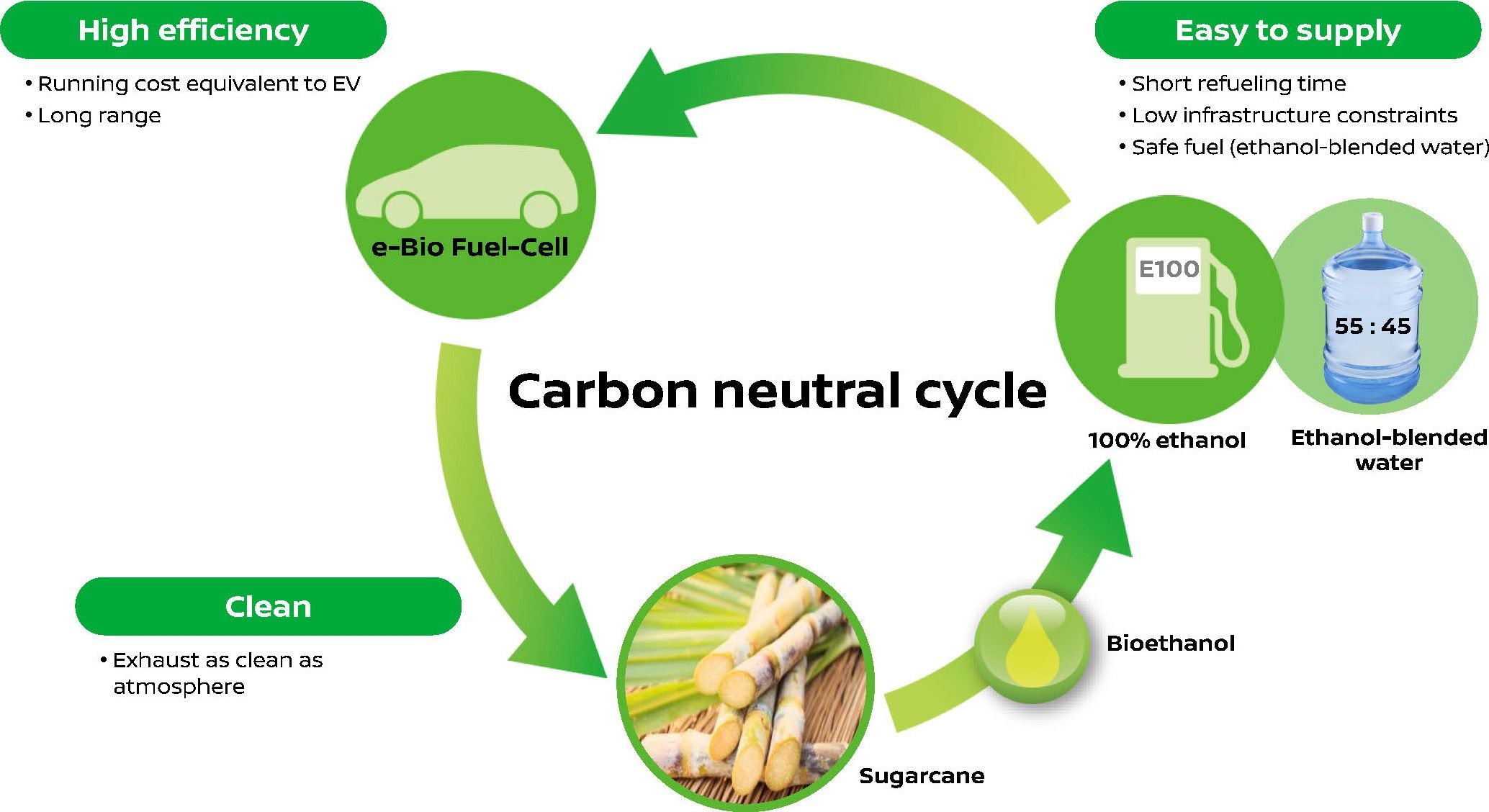
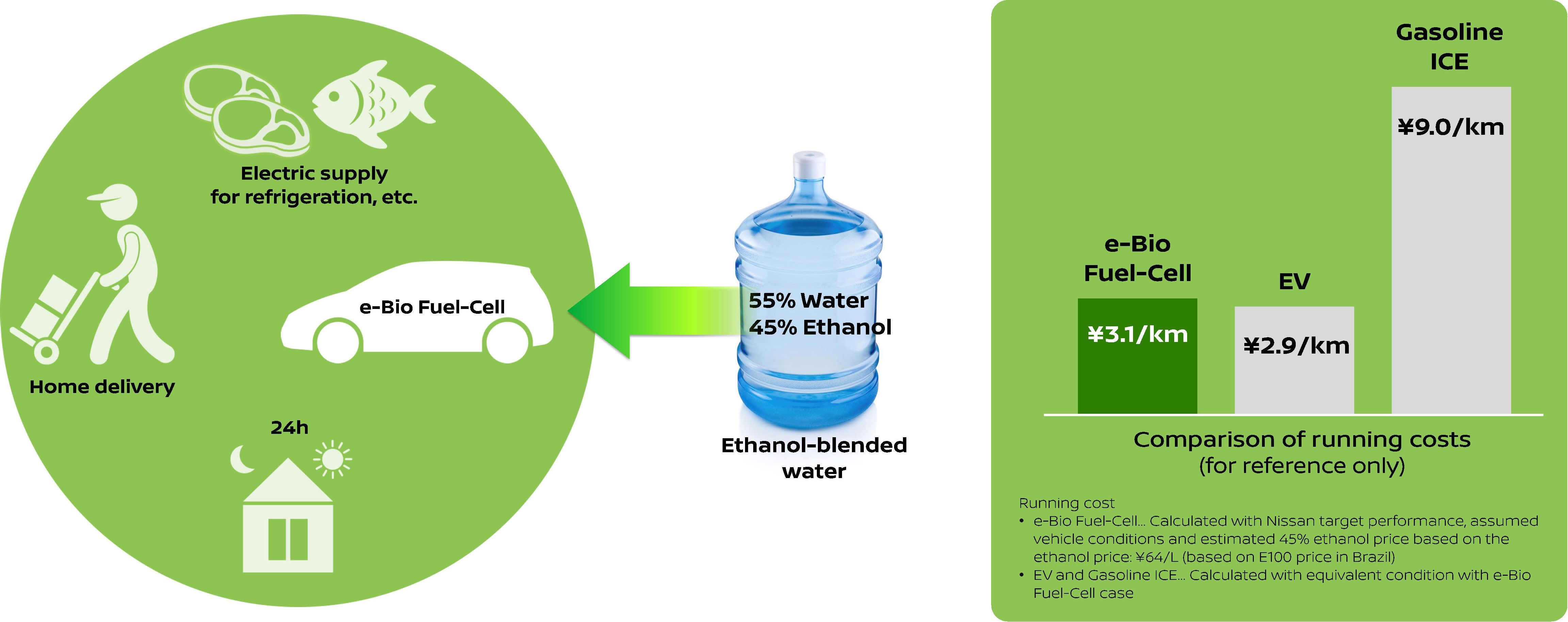
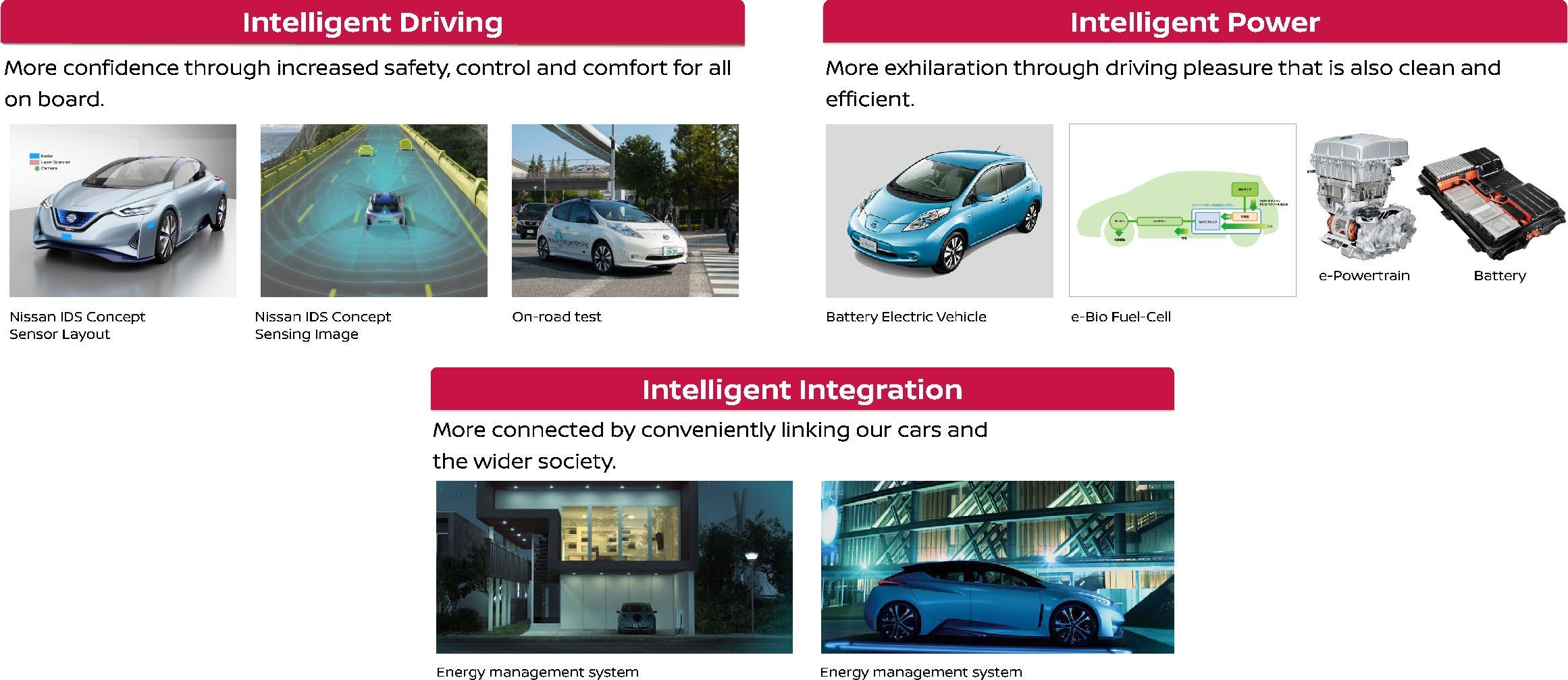
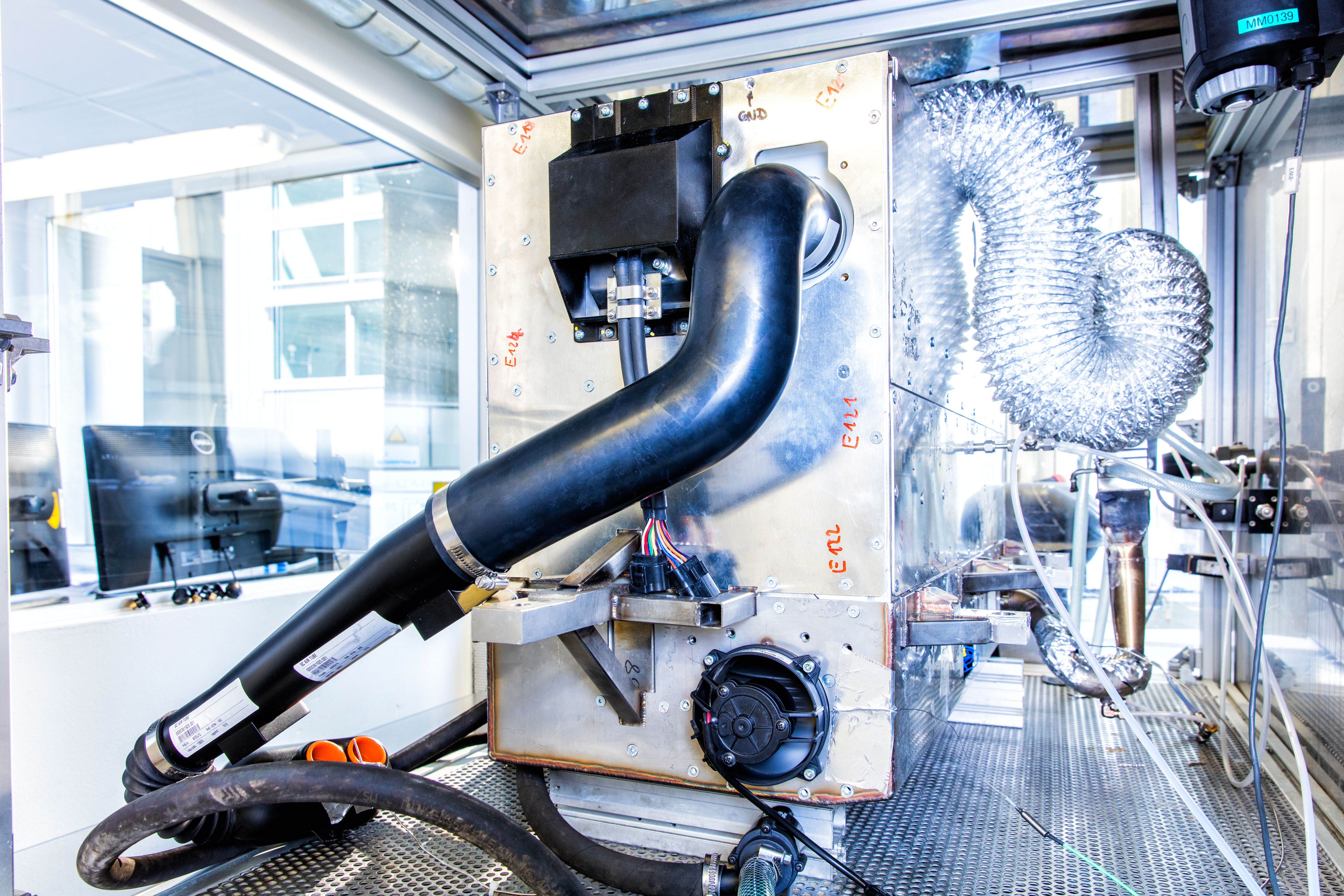
- Make: Array
- Model: 2017 Nissan Solid-Oxide Fuel Cell NV200 Van
- [do not use] Vehicle Model: Array
Overview Video

Exterior



Save for the colorful wrap, this Nissan NV200 isn’t much different than the standard cargo or passenger van. There are small differences, however. The main change is up front. The grille has been replaced with a Nissan LEAF-like panel. It’s not a door for a charging port, though. Fueling is done at the side of the van, just like a regular gasoline-powered NV200. The bumper area has also been smooth out, helping with aerodynamic efficiency.
Around back, Euro-style clear taillights replace the standard all-red units, giving the van a clean look. Blue Nissan logos are also found front and back, and on the center caps on each wheel.
Interior

Nissan hasn’t released any information on the e-Bio Fuel-Cell NV200’s interior, but we imagine it remains relatively stock. The accompanying video Nissan released does show a unique charging display that details the workings of the fuel cell system.
Drivetrain

The magic behind this van lies under its body and floorboards. There are several components to the e-Bio Fuel-Cell system on top of the traditional battery and electric motor. Like modern fossil-fuel cars, the e-Bio NV200 uses a non-pressurized tank to store its liquid fuel. This ethanol fuel is then used in the Solid-Oxide Fuel Cell system to generate electricity, which in turn charged the 24 kWh battery.
The only ingredients in the mix are ethanol and air. The ethanol’s corn and sugarcane sources are abundantly grown in North and South America, along with Asia, making it easy to come by. Dispensing the fuel would be a simple as adding another tank and pump handle at neighborhood filling stations. Regular, mid-grade, premium, and ethanol might one day be a normal sight when filling up.
Prices

Nissan has not released any pricing information or details on when/if this e-Bio Fuel-Cell technology will be available. Undoubtedly, integrating the 100-percent ethanol fuel into gas stations will take a while, as will people’s acceptance of the new fuel source. However, the more people embrace the new technology, the faster the adoption will become. Other automakers will also need to jump on board before e-Bio Fuel-Cells become a widely seen commodity.
Conclusion

This is exciting news from Nissan. The e-Bio Fuel-Cell basically eliminates the headache of compressed hydrogen in a standard fuel cell vehicle, allowing the this fuel-cell system to use non-pressurized liquid fuel. It’s the best of both worlds. Drivers get the convenience of familiar fill-ups while reaping the huge benefits fuel cell and electric driving.
We will certainly be keeping an eye on this topic with hopes that it becomes a viable powertrain option in the future.

